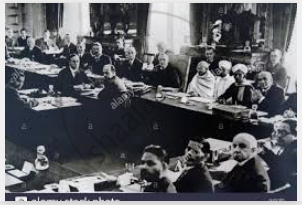Advertisements
Advertisements
Question
Write a short note.
Anti Partition Movement
Solution
British, who ruled India for nearly a hundred years, stayed on the idea to divide and rule India. The unity of India was destroyed by creating indifferences on political, cultural and religious grounds. Partition of Bengal was such a political idea of the British to divide and rule India.
They wanted to make problems in the name of religious sentiments. Lord Curzon divided the territories of Bengal in this way:
- The western part formed the Hindu majority area.
- The eastern part formed the Muslim majority area.
The partition of Bengal ultimately took place on 16th October 1905. The group of protest movements that happened against the Bengal partition is called the anti-partition movement. The main features of the Anti-partition movement are:
- Objections and gatherings: The people appealed to the government to change the decision in the Bengal partition. The leaders of the Muslim organizations were of the opinion that the partition is neither necessary nor needful. Objection meetings were organized all over Bengal. Journalists of Bengal also launched a movement against the proposal for the partition of Bengal.
Leaders of Bengal travelled through the country and asked people to boycott British goods. The boycott aimed at creating economic pressure on England. The boycott movement spread all over Bengal. Students forced the shopkeepers to stop selling British goods through picketing. They boycotted government schools and colleges.
- Swadeshi movement and overall participation of people: The boycott movements led the way to the Swadeshi movement. The Swadeshi movement was to make Indians use Indian goods only. All classes of people participated in the movement. The entire national leadership was a part of it. The idea of the British creating communal tension was lessened by the national spirit and patriotism.
RELATED QUESTIONS
______ wrote the Geeta Rahasya.
Explain the following statement with reasons.
In the struggle for independence, a sense of identity was awakened among the Indians.
Explain the following statement with reason.
Lord Curzon decided to partition Bengal.
Fill in the blanks:
Exploitation of India by the British was direct and harsh before 1857; after 1857 it became ___________ and ___________.
State whether the following is true or false:
The Revolt of 1857 had failed to rid India of foreign rule
Answer the following question in one or two words/ sentences:
Define nationalism
Answer the following question briefly:
With reference to the rise of Indian nationalism, answer the following questions:
How did the British economic policies lead to the growth of Indian nationalism?
State whether the following statement is True or False:
The Congress participated in the first Round Table Conference.
Look at the picture given below and answer the following question.

Who were the main participants in this conference?
Answer the following question:
Which factors contributed to the building up of the feeling of nationalism in India?
